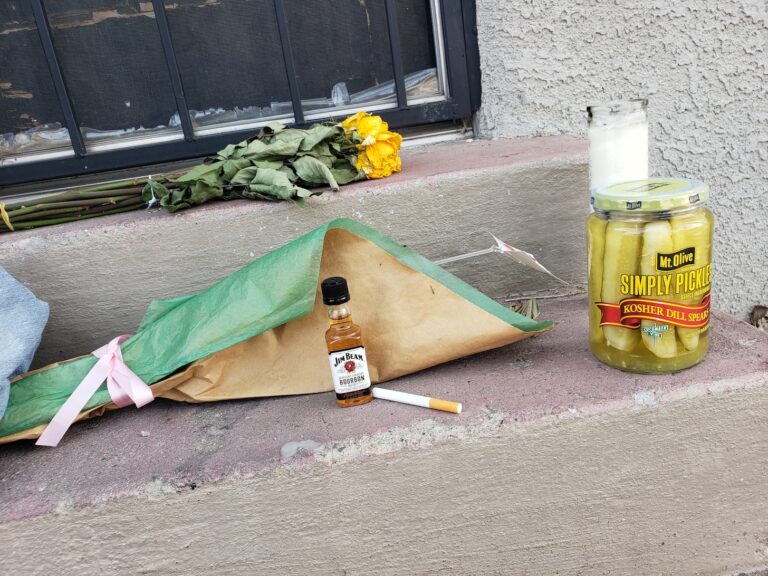The opinions expressed are solely those of the author. E-mail griego@alibi.com.
Latest Article|September 3, 2020|Free
::Making Grown Men Cry Since 1992
5 min read
Wanna have some fun with the locals? Pretend you’re a tourist and start asking people where the center of town is. Most people in Albuquerque will respond, “You mean Downtown?” Then you should say, “Well, the place where people interact, the place that sort of sums up the town.” You will get one of several answers: A) “Leave me alone before I call the cops;” B) “Well, Downtown has a lot of bars and a few restaurants, some people hang out there;” C) “Old Town has a lot of shops and touristy stuff but there are also a lot Texans;” or D) “The mall.”As cities grow bigger and spread out, it is difficult to point to the center. Do Denver or Dallas have a center? The answer is that they have several centers. That is, several dynamic areas of town where people come together to work, play, walk, celebrate.But even if you ask the average resident of a smaller New Mexico town where the “center” is, they might say, “You’re not from around here, are ya?” They might also recommend a Wal-Mart. Or nothing. Why? Like most communities, smaller towns are struggling to find (or often re-find) their center. This week in Albuquerque about 100 local leaders from around the state are meeting to discuss how they can revitalize their town centers. The conference will bring together planners and public officials to, in a word, find their “center.” The popular related term for “center” in the so-called New Urbanist movement is “Sense of Place.” But what does it mean? Does it mean protecting what is already there at all costs, even at the expense of new jobs or new development? For most of New Mexico’s smaller communities, any new investment that creates jobs in struggling communities is good. The challenge is to protect what is real and unique about neighborhoods, small towns and rural areas. What is it that makes your neighborhood or town different than anywhere else? Is it a great mainstreet? A historic building? A great locally owned restaurant or bar? Some beautiful natural area like a park, river or mountain? And how do you make that symbol of your community’s uniqueness the centerpiece of your planning, growth and economic development? These are the questions that local leaders from around our state struggle with as they try to get outsiders to pay attention (and the operational word is “pay”) without changing the very nature of what makes their community special. One of the great things about small towns and rural areas is that people know each other. The challenge is to preserve that small town culture while creating more dynamic local economies.For many of these communities with limited services, a new Wal-Mart is the best economic development idea they can muster. Whatever you think about Wal-Marts (I’m not a big fan), they fundamentally change the “center” of a community. Sadly, in some towns, they become the new center. Even if they sit on the edge of town.The question I will ask local leaders in Albuquerque this week: What is it that makes your community unique? The village idiot is not what we’re talking about here. A historic church? An old plaza? A great mainstreet Downtown? How will you protect that and also make the unique physical attribute of your community the cornerstone of your efforts to revitalize your community? The temptation is often to try to recreate something that is not native. Not local. Chain stores, big boxes, track housing. What author James Howard Kunstler calls “the geography of nowhere.” Kunstler, in his book Home From Nowhere , argues that most American communities have lost their sense of place. In their eagerness to grow in the post-war era, traditional design models were abandoned. Only now, more than five decades later, are we realizing that what makes American cities beautiful and livable has been lost and must be rediscovered.There are some great examples of this rediscovery in the Duke City. East Downtown (“EDo”) built on the success of the revitalization of one of Albuquerque’s best-known historic buildings, the old Albuquerque High, to propel the redevelopment of the whole corridor. Nob Hill used the old shops along the historic Route 66 to revitalize an area which is now the hippest in town. There are also some great examples around the state. Las Vegas, with its revitalizing mainstreet, beautiful Plaza Hotel and plaza, is becoming a place where sense of place is important. Silver City’s mainstreet is vibrant with restaurants, bookstores, bars and the old Montgomery Ward building that is now a brand-new thriving small artistic tile business called Syzygy. Clayton is trying to use its historic Ekland Hotel and Luna Theater to create the original mainstreet feel of this crossroads community between New Mexico and Texas. Some local officials are fond of saying the only thing worse than sprawl (suburban growth at the city’s edge) is density (compact growth in the center of the city). Meaning, people hate strip malls and rapid housing growth on the fringe of the city, but they also hate bigger, denser development in their town center that creates more traffic, more parking problems and more headaches. This “pro-growth” versus “anti-growth” dichotomy is too simplistic. The better question is: Can dynamic growth happen at the fringe of the city in addition to the center? Are there enough dollars to support both?How we answer that question here in Burque and around the state means everything for our economic future. A centered city is vital to a sense of place. Let’s hope we can find it.






